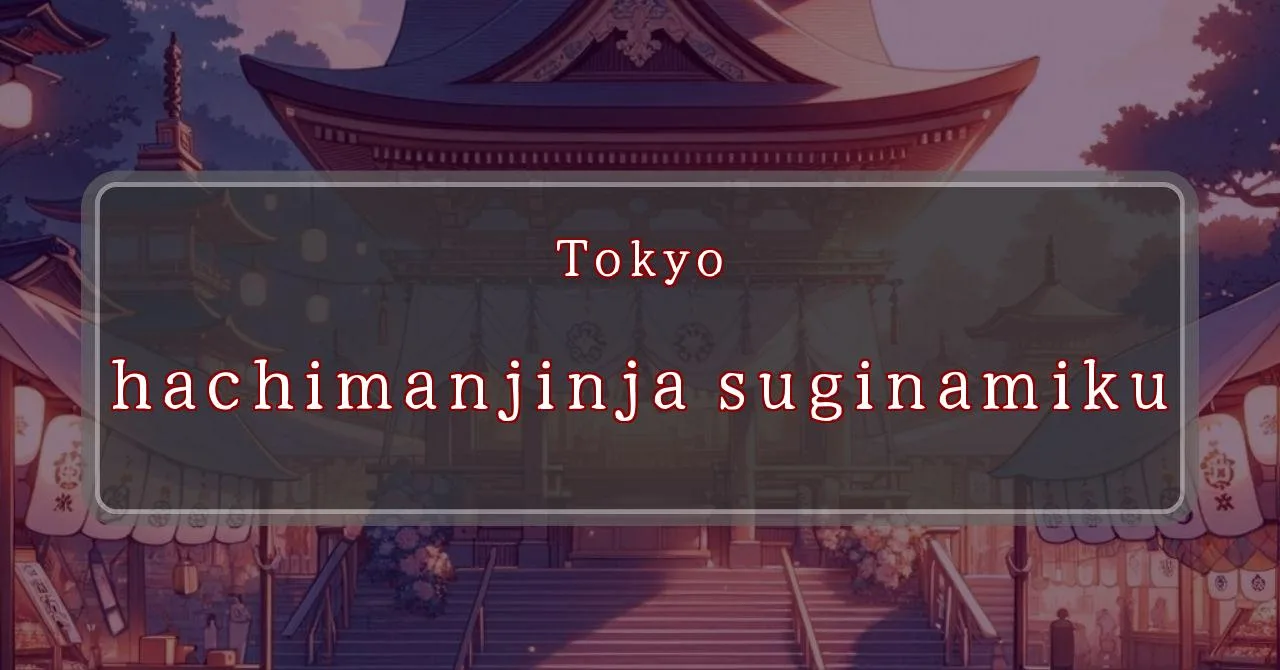Gleaming lights, vibrant festival
Basic Information
Here’s a detailed overview of the festival.
- Address: 4-39-3 Shimotakaido, Suginami-ku, Tokyo 168-0073
- Phone Number: 03-3329-0837
- Access: 10 minutes on foot from Hamadayama Station on the Keio Inokashira Line, or 15 minutes on foot from Sakurajosui Station on the Keio Line
- Festival Days: Last Sunday of September
Main Events and Attractions of the Festival
Here are the main events and attractions of the festival:
Mikoshi Procession
The highlight of the festival is the mikoshi procession, where a portable shrine is carried through the streets of the neighborhood. The mikoshi is decorated with colorful tapestries and carried by teams of people. The procession is accompanied by music and dancing, and it’s a great opportunity to experience the lively atmosphere of the festival.
Lion Dance
Another popular attraction is the lion dance.獅子舞 Shishimai. A costumed performer dances to the beat of a drum, and the lion’s head moves and roars. The lion dance is said to bring good luck and ward off evil spirits.
Food Stalls
No Japanese festival is complete without food stalls! At the八幡神社 杉並区 festival, you’ll find a variety of food stalls selling everything from traditional Japanese dishes to international cuisine. There’s something for everyone to enjoy.
Blessings and Deities
The八幡神社 杉並区 festival is dedicated to the god Hachiman, the god of war and archery. Hachiman is also revered as the protector of warriors and the patron deity of the Minamoto clan, which ruled Japan during the Kamakura period (1185-1333).
- Benefits: Hachiman is believed to bestow blessings of victory, protection, and success in battle.
- Deities: The main deity of the festival is Hachiman, but other deities are also enshrined at the shrine, including his wife, Himegami, and his son, Ojin.
Origin and History
The origins of the八幡神社 杉並区 festival are unclear, but it is believed to have been held for centuries. The first written record of the festival dates back to the Edo period (1603-1868), when it was mentioned in a document from the local village office.
- Establishment: The exact date of establishment is unknown, but it is believed to have been founded sometime during the Kamakura period (1185-1333).
- History: The festival has been held annually ever since, except for a brief period during World War II.
Tips and Notes for Visitors
If you’re planning to attend the八幡神社 杉並区 festival, here are a few tips and notes to keep in mind:
- Date and Time: The festival is held on the last Sunday of September each year. The main events take place during the day, but there are also evening events, such as a fireworks display.
- Location: The festival is held at the八幡神社 in the Suginami Ward of Tokyo.
- Access: The shrine is a 10-minute walk from Hamadayama Station on the Keio Inokashira Line, or a 15-minute walk from Sakurajosui Station on the Keio Line.
- What to Wear: There is no dress code for the festival, but it’s recommended to wear comfortable shoes as you’ll be doing a lot of walking.
- What to Bring: Bring a camera to capture the festive atmosphere, and some cash for food and souvenirs.
Parking Information
There is no parking lot at the八幡神社, but there are several public parking lots nearby.
- Times Square Parking Lot: This parking lot is located a 5-minute walk from the shrine.
- Hamadayama Station Parking Lot: This parking lot is located a 10-minute walk from the shrine.
- Sakurajosui Station Parking Lot: This parking lot is located a 15-minute walk from the shrine.
Popular Stalls and Food Carts in Recent Years
| Type of Stall | Description |
|---|---|
| Takoyaki | A staple at Japanese festivals. Characterized by a crispy outside and a creamy inside. |
| Jaga Butter | A simple yet popular snack of hot potatoes lavishly topped with melted butter. |
| Baby Castella | Small castella cakes, sweet and fluffy treats enjoyed by children and adults alike. |
| Grilled Ayu with Salt | Fresh ayu fish grilled whole with salt, a savory taste of Japanese summer. |
| Shaapin | A unique gourmet item influenced by foreign cuisine, with a chewy skin wrapping the filling. |
| Okonomiyaki | A Japanese grilled dish where you often choose your own ingredients for a personalized flavor. |
| Cotton Candy | A fluffy, sweet snack that’s extremely popular with children. |
| Chocolate Banana | A banana coated in chocolate, a fun and visually appealing dessert. |
| Kushiyaki | Various types of ingredients skewered and grilled, an easy-to-enjoy snack. |
| Yakisoba | Fried noodles mixed with a special sauce, a fast food favorite in Japan. |



